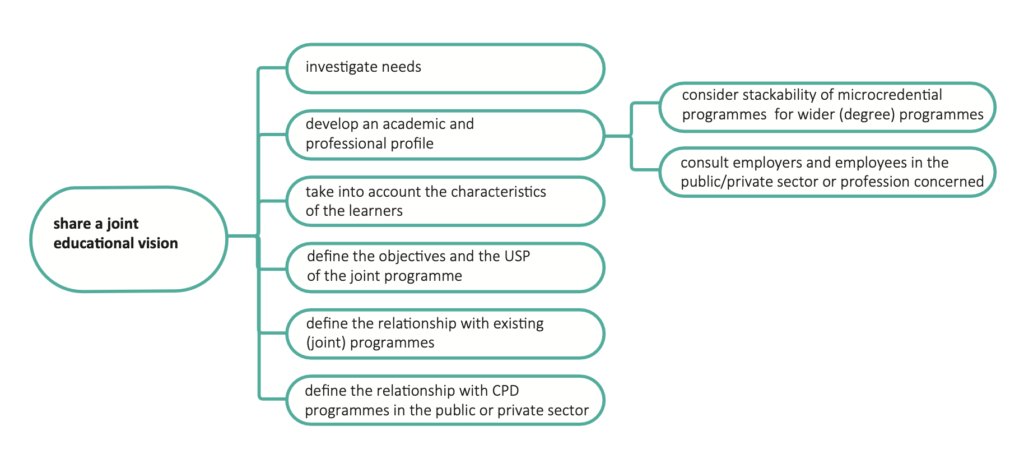
| As a first step, partners have to develop a joint educational vision for the programme, consisting of: |
| Investigate needs; |
| Develop an academic and professional profile; |
| Take into account the characteristics of the learners envisaged; |
| Define the objectives and the unique selling point of the programme; |
| Define the relationship with existing courses and programmes. |
Guidelines
Investigate needs
A needs assessment in the targeted academic and professional field is done on the basis of existing documents or after consultation of stakeholders. Already at this stage, it is useful to rely on associated partners such as professional organisations, sectors and companies or public services.
Develop an academic and professional profile
The academic and professional profile of the micro-credential programme is determined based on identified needs, its potential link to degree education and its relevance to employers and workers in the field. The stackability with academic programmes is examined, as well as the place of the programme in relation to the labor market.
Take into account the characteristics of the learners
The partnership defines the main target groups for the micro-credential programme and the expected learning characteristics. They include the prior knowledge needed and the willingness to improve competences for employment and innovation in certain business sectors or in public services.
Define the programme’s objectives and unique selling point
The general objectives of the programme are defined at national and European level in economic, social and cultural terms.
The objectives of the micro-credential programme are then defined from an academic point of view and its possible contribution to the innovation and competitiveness of the higher education institutions involved.
A “unique selling point” is being sought for a sufficient target group in the partnership and beyond.
Define the relationship with existing courses and programmes.
The relationship with other continuing education and professional development offerings in the partnership is clarified. Potential course-level collaborations are being explored. The added value of the micro-credential programme compared to existing programmes in the same field at national and European level is explained. It also indicates the extent to which this added value contributes to university excellence
next chapter: Design the joint micro-credential curriculum
previous chapter: Ensure (cross-) institutional support
back to overview: Models and guidelines for the design and development
of a joint micro-credential programme in higher education
